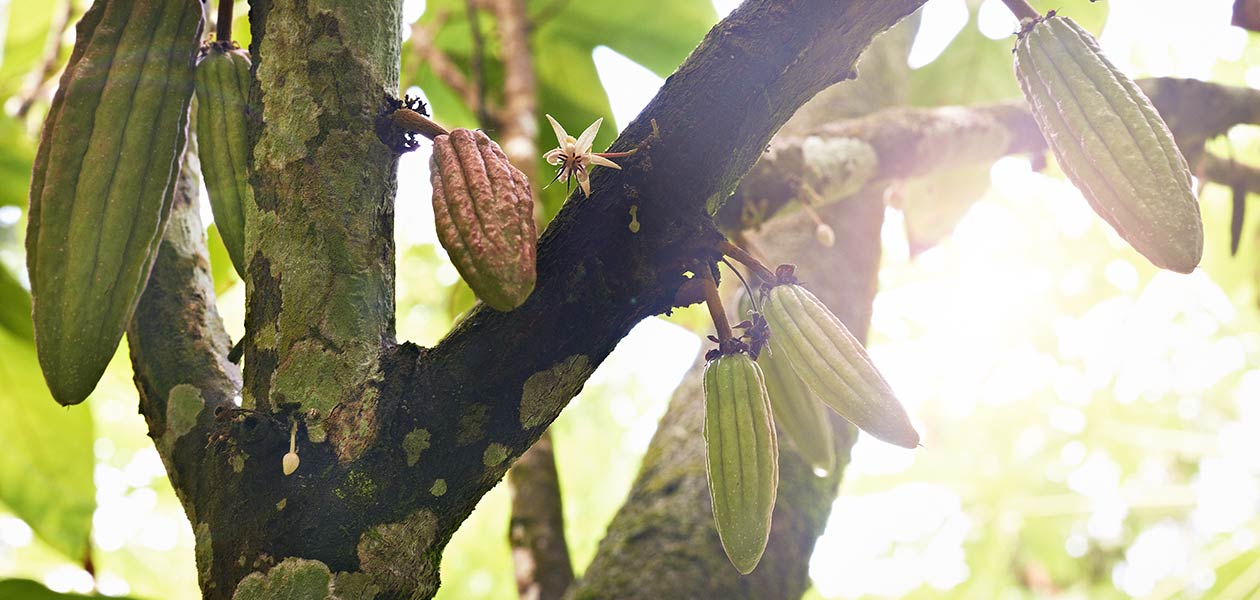Cocoa Growing
Cocoa Growing
At the Hotel Chocolat cacao farm in St Lucia, we are currently able to farm, harvest, ferment and dry the cocoa beans. Once the factory is built and running effectively, we will be able to convert the cocoa beans from our cacao farm and beans from other farms across the island.
Planting and Grafting
Whether it’s grown from a seed or grafted onto rootstock, cocoa is a fairly difficult tree to grow, which is why it is always nurtured as a seedling first, before being planted out on the farm. Even then they can’t be left to fend for themselves as cocoa is a fragile tree – needing both shade and sunshine, frequent rain and protection from winds, pests and diseases. All our new seedlings are created by grafting. It’s a process by which cuttings from our most prized trees can be grown on strong and productive rootstock. It is more expensive and time consuming than growing from seeds, but it allows us to control precisely which trees we propagate and get quicker yields.
We have worked with university experts to identify the DNA of the old and rare cocoa trees on our estate, which we then propagate to create new seedlings with which to repopulate and expand our historic estate.
If you visit us at our Hotel on Rabot Estate you can take part in the Tree to Bar Experience and see for yourself our seedlings nursery. You’ll be able to create your own seedling, which will be labelled and planted out – so you can go back and visit it!
Harvesting, Fermenting and Drying
Only about 1% to 3% of the delicate little cocoa flowers on a tree go on to produce cocoa pods. Unusually, pods grow direct from the trunk and main branches and they do it throughout the year, taking about six months to grow into mature pods. We harvest twice a year – the main one happens between November and February and there’s a smaller one between April and June.
The pods are picked when they’re ripe and left to rest for three or so days, after which they are ‘cracked’ (chopped open with great skill using sharp machetes). The empty pods are used as organic fertiliser around the estate while the seeds and pulp are scooped out and placed in wooden boxes in the fermentation shed. It’s a crucial, seven-day process by which the beans undergo a chemical reaction and the foundations of future chocolate flavours are laid. We turn the box every two days using wooden cocoa paddles, gathering temperature data at each turn – the beans can reach 50ºC. After seven days, the beans are turned out onto trays to dry in the warm Saint Lucian sun. Recently, we have also started to protect our beans from the hottest part of the sun to avoid burning or over-drying them by putting them in the shade between midday and 2pm.
